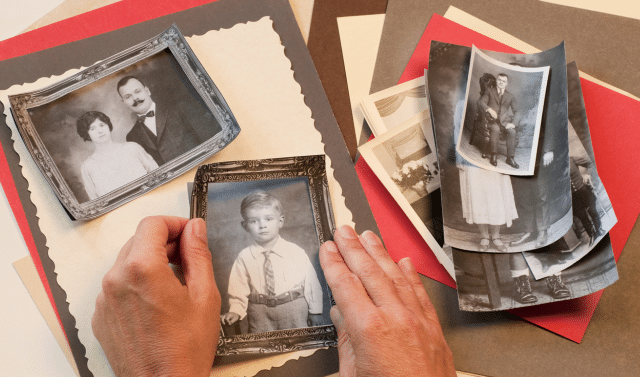Sign up for the Family Tree Newsletter! Plus, you’ll receive our 10 Essential Genealogy Research Forms PDF as a special thank you.
Get Your Free Genealogy Forms
"*" indicates required fields
Colorful lights blinking from rooftops, Christmas trees shimmering with ornaments in foyers and living rooms, delicious food sprawled across kitchen counters—these images represent common holiday traditions that many of us look forward to every December. It’s a time when we get to reconnect with family, share conversation and good cheer and reflect on the year we will soon leave behind.
But maybe you want to make this holiday season a little more special by adopting a new holiday tradition. Holiday traditions are not only fun and festive but also an excellent way to bring the family together and recognize what makes yours so unique.
Getting everyone on board with a new tradition can be challenging. After all, people tend to be reluctant to change, especially when it comes to something as meaningful as the holidays. Fortunately, there are some steps you can take to make adopting new holiday traditions more exciting and less intimidating for the entire family.
1. Build Off Existing Family Fun
Everyone should be able to look forward to a family tradition, no matter how silly or over-the-top it seems. If everyone dreads it, it’s not likely to survive to next year, let alone many years to come.
When brainstorming new tradition ideas, think about what activities your family already enjoys doing together. Is there a way to turn any of them into a fun tradition?
For example, maybe your family frequently has movie nights. A new tradition might be collaborating to put together an entertaining video each December that captures all the good things that happened throughout the year—from the cousins’ high school graduation to Uncle Joe and Aunt Mary’s wedding, and so on. Then the family could get together for a screening of the film.
2. Involve Family Members
People tend to feel more enthusiastic about things in which they play some role. Many classic holiday traditions—frosting snowman-shaped sugar cookies, tasting holiday dishes while cooking, trimming a Christmas tree—are participatory, get the whole family involved and allow everyone to form their own memories.
You might also choose traditions that capture who your family members are. For example, perhaps you all decorate the living room with homemade Christmas decorations: collages of family treasures, heirloom ornaments or family photo wreaths.
Whatever tradition you want to adopt, you should also consider offering roles instead of assigning them. That way, the tradition feels like a great honor rather than another chore that must be completed. And respect that not everyone may want to participate in the same way. If your tradition involves crafting, for example, remember that you’ll also need people to perform non-crafting roles: shopping for materials, organizing the craft table and doing any actual decorating.
3. Integrate the Old With the New
The best holiday traditions endure because they mean something special to everyone. Sure, that something may vary from one person to the next. The babies of the family may not regard a generations-old gravy recipe with the same nostalgia that Grandma does, but they can still learn why making it every year is important for keeping her memory alive.
With that in mind, introduce a new tradition with a short introduction of what it is, what story or memories it brings up, and how it will be repeated in years to come. Keep it short—you don’t want your family to have to sit through a long lecture. You might even make the explanation interactive, inviting others to talk and reminisce.
For example, if you want to re-create a complicated recipe that has been in the family for years, you might show everyone the original faded handwritten recipe card and black-and-white pictures of everyone gathered around the dinner table about to dig in. You might even consider inviting your family to make their own recipe cards, which could be especially exciting for kids with a creative streak. You can then display the new cards every year. Don’t forget to re-create an annual photo as well!
Just because you are adopting a new tradition does not mean that you have to abandon old ones. In fact, a new tradition may be a wonderful opportunity to showcase what makes those longer-standing ones so special. To expand upon the recipe example above, you may serve that classic turkey and gravy alongside a new family-favorite dessert. But now, maybe you come up with a story about the meal as a family that you can share every year, or maybe you create your very own family holiday cookbook and annually add to it. We have a whole article that touches upon enjoying family recipes to give you some ideas.
4. Be Patient With Your Family—And Yourself!
As we said from the start, people are not always receptive to change, even if they like the idea as a whole. Like a good habit, an excellent family tradition is worth keeping around—but getting it to stick can take some time. You may find that the tradition changes over the course of a single snowy night. Maybe nothing about it stays the same except the general theme.
What’s important is that your family can come together and create memories that last even if the activities that spawned them transform and evolve.










